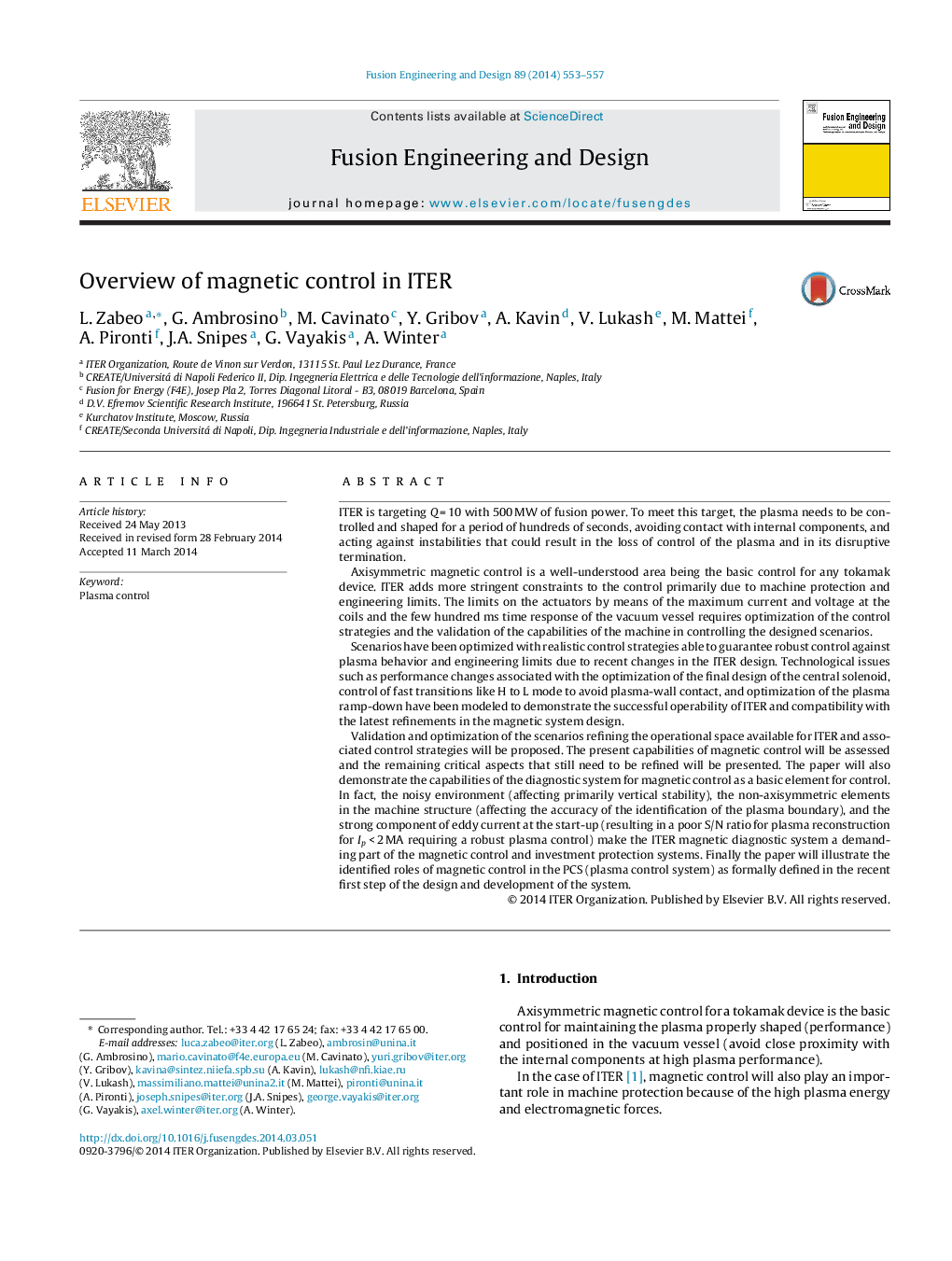| کد مقاله | کد نشریه | سال انتشار | مقاله انگلیسی | نسخه تمام متن |
|---|---|---|---|---|
| 271422 | 504995 | 2014 | 5 صفحه PDF | دانلود رایگان |

ITER is targeting Q = 10 with 500 MW of fusion power. To meet this target, the plasma needs to be controlled and shaped for a period of hundreds of seconds, avoiding contact with internal components, and acting against instabilities that could result in the loss of control of the plasma and in its disruptive termination.Axisymmetric magnetic control is a well-understood area being the basic control for any tokamak device. ITER adds more stringent constraints to the control primarily due to machine protection and engineering limits. The limits on the actuators by means of the maximum current and voltage at the coils and the few hundred ms time response of the vacuum vessel requires optimization of the control strategies and the validation of the capabilities of the machine in controlling the designed scenarios.Scenarios have been optimized with realistic control strategies able to guarantee robust control against plasma behavior and engineering limits due to recent changes in the ITER design. Technological issues such as performance changes associated with the optimization of the final design of the central solenoid, control of fast transitions like H to L mode to avoid plasma-wall contact, and optimization of the plasma ramp-down have been modeled to demonstrate the successful operability of ITER and compatibility with the latest refinements in the magnetic system design.Validation and optimization of the scenarios refining the operational space available for ITER and associated control strategies will be proposed. The present capabilities of magnetic control will be assessed and the remaining critical aspects that still need to be refined will be presented. The paper will also demonstrate the capabilities of the diagnostic system for magnetic control as a basic element for control. In fact, the noisy environment (affecting primarily vertical stability), the non-axisymmetric elements in the machine structure (affecting the accuracy of the identification of the plasma boundary), and the strong component of eddy current at the start-up (resulting in a poor S/N ratio for plasma reconstruction for Ip < 2 MA requiring a robust plasma control) make the ITER magnetic diagnostic system a demanding part of the magnetic control and investment protection systems. Finally the paper will illustrate the identified roles of magnetic control in the PCS (plasma control system) as formally defined in the recent first step of the design and development of the system.
Journal: Fusion Engineering and Design - Volume 89, Issue 5, May 2014, Pages 553–557